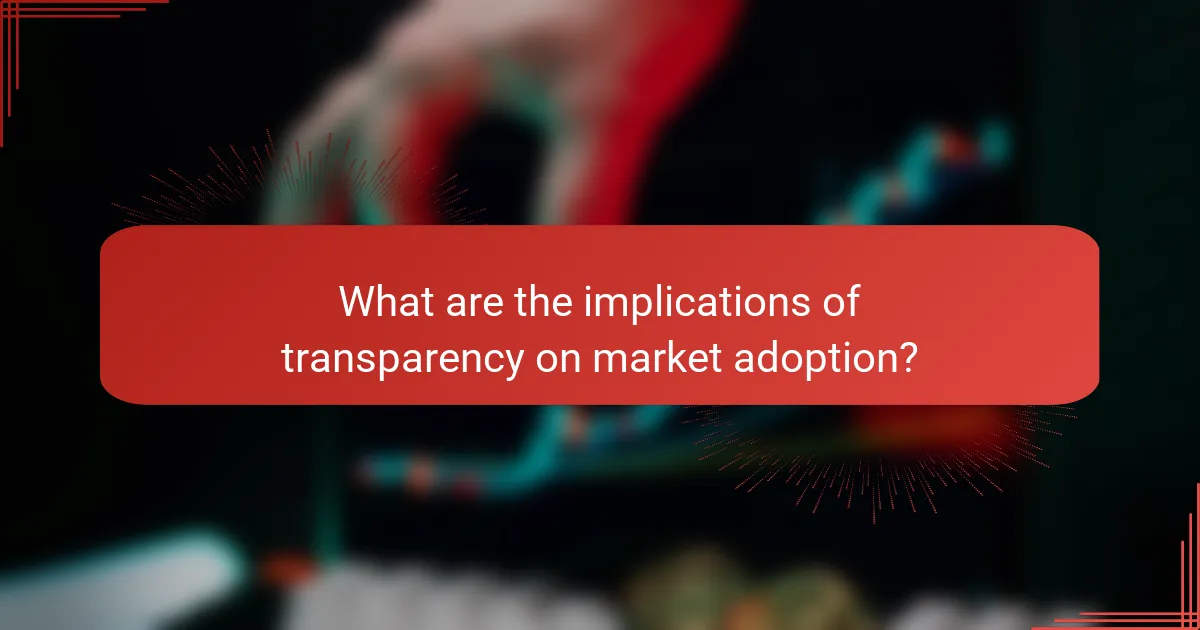
What are the transparency levels of stable coins?
The transparency levels of stable coins vary significantly among different types, impacting user trust and regulatory compliance. Generally, transparency refers to how openly a stable coin discloses its reserves, auditing processes, and operational practices.
Transparency in Tether (USDT)
Tether (USDT) has faced scrutiny regarding its transparency, primarily due to its past claims about being fully backed by reserves. Currently, Tether publishes quarterly attestations from an independent firm, which verify that its reserves are sufficient to cover the amount of USDT in circulation, although the exact composition of these reserves remains somewhat opaque.
Users should be aware that Tether’s reserves include not only cash but also other assets like loans and commercial paper, which may introduce risks. Regularly reviewing Tether’s transparency reports can help users gauge its reliability.
Transparency in USD Coin (USDC)
USD Coin (USDC) is known for its high transparency standards. It is fully backed by U.S. dollars held in reserve, and the reserves are audited monthly by a reputable accounting firm, ensuring that each USDC is backed by an equivalent dollar.
Additionally, USDC provides detailed reports on its reserves, which are publicly accessible. This level of transparency fosters greater trust among users and aligns with regulatory expectations in the U.S.
Transparency in DAI
DAI operates differently from traditional stable coins, as it is a decentralized stablecoin backed by various cryptocurrencies rather than fiat currency. The transparency of DAI comes from its smart contracts, which are open-source and allow users to see how collateral is managed and how the stability mechanism works.
Users can track DAI’s collateralization ratios and governance decisions through platforms like MakerDAO. However, potential users should understand the risks associated with cryptocurrency volatility and the complexity of the system before engaging with DAI.

How do auditing practices affect trust in stable coins?
Auditing practices significantly impact trust in stable coins by ensuring transparency and accountability. Regular audits provide assurance that the assets backing these coins are properly managed and accurately reported, which is crucial for user confidence.
Auditing processes for Tether
Tether employs a third-party firm to conduct regular audits of its reserves, which are intended to back the USDT stable coin. These audits verify that Tether holds sufficient assets to match the amount of USDT in circulation, although the frequency and depth of these audits have been subjects of scrutiny.
In practice, Tether has faced criticism for its lack of full transparency, as it often releases attestation reports rather than comprehensive audits. Users should consider this when evaluating the trustworthiness of Tether, as the nature of these reports can vary in detail and reliability.
Auditing processes for USD Coin
USD Coin (USDC) undergoes monthly audits by a reputable accounting firm, ensuring that the reserves are fully backed by US dollars or equivalent assets. This regular auditing process enhances trust among users, as it provides consistent verification of the coin’s backing.
USDC’s commitment to transparency is further supported by its adherence to the Statement on Standards for Attestation Engagements (SSAE) 18, which sets a high standard for financial reporting. Users can access these audit reports, allowing them to assess the stability and reliability of USDC more effectively.

What are the key factors influencing trust in stable coins?
Trust in stable coins is primarily influenced by regulatory compliance, the quality of backing assets, and transparency in auditing practices. These factors determine how secure and reliable a stable coin is perceived to be by users and investors.
Regulatory compliance
Regulatory compliance is crucial for establishing trust in stable coins. Coins that adhere to local laws and regulations, such as those set by the Financial Action Task Force (FATF) or the European Union’s Markets in Crypto-Assets Regulation (MiCA), are generally viewed as more trustworthy. Compliance not only protects users but also enhances the legitimacy of the stable coin in the financial ecosystem.
To assess compliance, check if the stable coin issuer is registered with relevant authorities and follows anti-money laundering (AML) and know your customer (KYC) guidelines. This can significantly reduce risks associated with fraud and illicit activities.
Backing assets and reserves
The backing assets and reserves of a stable coin are fundamental to its stability and trustworthiness. A stable coin should ideally be backed by a mix of fiat currencies, commodities, or other cryptocurrencies that are easily liquidated. For example, a stable coin pegged to the US dollar should maintain reserves that are at least equal to the number of coins in circulation.
Investors should look for transparency in how reserves are managed. Regular audits by reputable third parties can provide assurance that the backing assets are sufficient and properly maintained. Some stable coins publish their reserve details, which can help users gauge their reliability.

How do stable coins compare in terms of transparency?
Stable coins vary significantly in transparency, primarily based on their backing and auditing practices. Some stable coins, like Tether, have faced scrutiny over their reserves, while others, such as USD Coin, provide regular attestations to ensure trust among users.
Comparison of Tether vs. USD Coin
Tether (USDT) has been criticized for its lack of transparency regarding the assets backing its tokens. While it claims to be fully backed by reserves, the details of these reserves have not always been clear, leading to concerns about its stability.
In contrast, USD Coin (USDC) is known for its commitment to transparency. It undergoes regular audits by independent firms, providing users with confidence that each USDC is backed by a corresponding US dollar held in reserve. This difference in auditing practices significantly impacts user trust.
Comparison of DAI vs. other stable coins
DAI operates differently than many fiat-backed stable coins by being collateralized through a system of smart contracts on the Ethereum blockchain. This decentralized approach allows for greater transparency, as users can verify the collateral backing DAI at any time.
Unlike Tether and USD Coin, which rely on centralized reserves, DAI’s transparency comes from its on-chain governance and collateralization mechanisms. However, this also introduces risks related to the volatility of the collateral assets, which can affect DAI’s stability during market fluctuations.

What are the implications of transparency on market adoption?
Transparency in stablecoins significantly influences their market adoption by fostering trust among users and investors. When stablecoins provide clear information about their reserves and auditing processes, they are more likely to attract a broader audience and encourage usage.
Impact on user confidence
User confidence in stablecoins is closely tied to their transparency levels. When users can verify that a stablecoin is backed by sufficient reserves, they feel more secure in its value stability. For example, stablecoins that undergo regular third-party audits and publish their results tend to gain a loyal user base.
Moreover, transparency helps mitigate fears of fraud or mismanagement. Users are more likely to adopt a stablecoin that openly shares its operational practices and financial health, leading to increased market participation.
Effect on institutional investment
Institutional investors prioritize transparency when considering stablecoin investments. Clear auditing and reporting practices are essential for these investors to assess risk and compliance with regulatory standards. Stablecoins that demonstrate high transparency are more appealing to institutions looking to integrate digital assets into their portfolios.
Additionally, regulatory scrutiny is a significant factor for institutional involvement. Stablecoins that adhere to established transparency norms are better positioned to navigate regulatory landscapes, thereby attracting more substantial institutional capital. This can lead to increased liquidity and market stability, benefiting all participants.

What are the future trends in stable coin transparency?
Future trends in stable coin transparency are increasingly focused on regulatory compliance and technological innovations. As the market matures, stakeholders are demanding higher levels of accountability and trust, leading to more stringent auditing practices and clearer reporting standards.
Emerging regulatory frameworks
Regulatory frameworks for stable coins are evolving worldwide, with many countries establishing guidelines to ensure transparency and consumer protection. For instance, the European Union is working on the Markets in Crypto-Assets (MiCA) regulation, which aims to create a comprehensive legal framework for digital assets, including stable coins.
These regulations often require stable coin issuers to provide regular audits and disclosures regarding their reserves and operational practices. This shift towards regulation is expected to enhance trust among users and investors, as compliance with established standards will become a key differentiator in the market.
Technological advancements in auditing
Technological advancements are transforming the auditing processes for stable coins, making them more efficient and transparent. Innovations such as blockchain-based auditing tools allow for real-time verification of reserves and transactions, enabling stakeholders to access up-to-date information about a stable coin’s backing assets.
Smart contracts are also being utilized to automate compliance checks and reporting, reducing the potential for human error and increasing the reliability of audits. As these technologies become more widely adopted, they will likely set new standards for transparency in the stable coin ecosystem.


